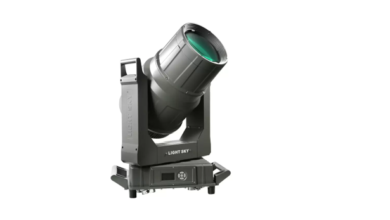Unraveling the Power of Static Application Security Testing (SAST)

Introduction
In an era dominated by digital advancements and a constant surge in cyber threats, the importance of robust application security cannot be overstated. As organizations strive to safeguard their digital assets and sensitive data, one indispensable tool in their arsenal is Static Application Security Testing (SAST). Delves into the intricacies of SAST, exploring its significance, methodologies, and how it plays a pivotal role in fortifying software against potential vulnerabilities.
Understanding SAST
Static Application Security Testing, commonly known as SAST, is a proactive security testing method designed to analyze the source code, bytecode, or binary code of an application without executing the program. Unlike dynamic testing methods that focus on runtime behaviors, SAST examines the application’s static elements, such as the source code and associated documentation.
I. The Significance of SAST
1. Early Detection of Vulnerabilities
SAST’s ability to analyze source code before the application is executed provides a distinct advantage—early detection of vulnerabilities. By identifying potential security flaws in the development phase, organizations can mitigate risks before the software reaches production. This proactive approach significantly reduces the cost and effort required to address security issues later in the development lifecycle.
2. Integration into the Software Development Lifecycle (SDLC)
SAST seamlessly integrates into the Software Development Lifecycle, offering developers the means to identify and rectify security issues during the coding and testing phases. This integration not only fosters a security-first mindset among development teams but also ensures that security is an integral part of the entire software development process.
3. Comprehensive Code Coverage
One of the strengths of SAST lies in its ability to provide comprehensive code coverage. By analyzing the entire source code, SAST can identify vulnerabilities that might be overlooked during manual code reviews or testing. This exhaustive examination ensures that potential security threats are not left undiscovered, promoting a more robust and resilient application.
II. How SAST Works
1. Source Code Analysis
At the core of SAST is the analysis of the source code. SAST tools scan the source code for security vulnerabilities, coding errors, and adherence to secure coding practices. This analysis is static, meaning it occurs without actually executing the program. By inspecting the code at rest, SAST tools can identify issues such as injection flaws, insecure dependencies, and improper access controls.
2. Rule-Based Detection
SAST employs a rule-based approach to identify vulnerabilities. These rules are predefined security guidelines and best practices that the SAST tool uses to assess the code. When a rule violation is detected, the tool flags it as a potential security issue. Examples of rules include checks for SQL injection, cross-site scripting, and buffer overflows.
3. False Positive Reduction
While SAST tools excel at identifying potential vulnerabilities, they can also generate false positives—warnings that suggest a vulnerability exists when there is none. Advanced SAST tools incorporate techniques to minimize false positives, such as contextual analysis and machine learning algorithms. This refinement ensures that developers can focus on addressing genuine security concerns without being inundated with irrelevant alerts.
III. SAST in Practice
1. Developer Empowerment
SAST empowers developers to take ownership of the security of their code. By integrating SAST into the development environment, developers receive real-time feedback on security issues as they write code. This immediate feedback loop not only accelerates the remediation process but also enhances developers’ understanding of secure coding practices.
2. Integration with CI/CD Pipelines
To facilitate a seamless and automated security testing process, SAST can be integrated into Continuous Integration/Continuous Deployment (CI/CD) pipelines. This ensures that every code change undergoes security scrutiny before being deployed, reducing the risk of introducing vulnerabilities into the production environment. Automated SAST in CI/CD also aligns with the principles of DevSecOps, where security is an integral part of the development and operations workflows.
3. Scalability and Consistency
SAST offers scalability and consistency in security testing. As organizations scale their development efforts, ensuring that every line of code undergoes security analysis becomes a daunting task. SAST tools automate this process, providing consistent and scalable security assessments across large codebases.
IV. Challenges and Considerations
1. False Positives and Negatives
Despite advancements in SAST technology, false positives and false negatives remain challenges. False positives can lead to wasted time and resources as developers investigate non-existent issues, while false negatives can result in overlooking actual security threats. Striking the right balance requires continuous refinement of SAST rules and leveraging complementary testing methods.
2. Limited Dynamic Analysis
SAST primarily focuses on static code analysis, which means it may not detect vulnerabilities that only manifest during runtime. To address this limitation, organizations often combine SAST with dynamic testing methods, such as Dynamic Application Security Testing (DAST), to achieve comprehensive coverage.
3. Integration Complexity
Integrating SAST into existing development workflows may pose challenges, especially in organizations with complex and mature software development processes. Successful integration requires careful planning, training, and collaboration between development, operations, and security teams.
V. The Future of SAST
1. Machine Learning and AI Integration
The future of SAST lies in the integration of machine learning and artificial intelligence. By leveraging these technologies, SAST tools can enhance their ability to identify complex patterns and reduce false positives. Machine learning can also contribute to more accurate risk prioritization, allowing organizations to focus on addressing the most critical security issues first.
2. Shift Left Security
The industry trend of “shifting left” emphasizes moving security practices earlier in the development process. SAST is a key enabler of this shift-left approach, as it provides developers with the tools and knowledge to address security issues at the source code level. This proactive stance is instrumental in building secure software from the ground up.
Conclusion
In a digital landscape where cyber threats are ever-evolving, Static Application Security Testing emerges as a fundamental pillar in the defense against potential vulnerabilities. By enabling early detection, integrating seamlessly into development workflows, and providing comprehensive code coverage, SAST empowers organizations to fortify their applications against security threats. As technology advances, the future of SAST holds promises of enhanced accuracy through machine learning, further solidifying its role as an indispensable component in the realm of application security. Organizations that embrace SAST as a proactive security measure are better positioned to deliver robust, secure, and resilient software in an increasingly interconnected world.





